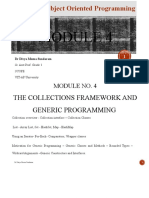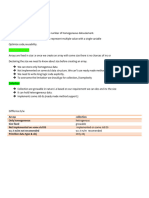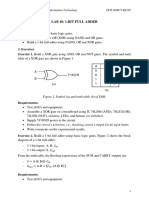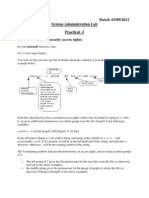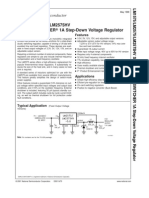0% found this document useful (0 votes)
21 views19 pagesCollection Notes - PDF
The document discusses the Collection framework in Java, which represents a group of objects as a single entity. It describes 9 key interfaces of the framework including Collection, List, Set, SortedSet, Queue, Map, SortedMap and NavigableMap. It then provides details about the Collection interface and List interface, their common methods, and the ArrayList class.
Uploaded by
Biswajit MaharanaCopyright
© © All Rights Reserved
We take content rights seriously. If you suspect this is your content, claim it here.
Available Formats
Download as PDF, TXT or read online on Scribd
0% found this document useful (0 votes)
21 views19 pagesCollection Notes - PDF
The document discusses the Collection framework in Java, which represents a group of objects as a single entity. It describes 9 key interfaces of the framework including Collection, List, Set, SortedSet, Queue, Map, SortedMap and NavigableMap. It then provides details about the Collection interface and List interface, their common methods, and the ArrayList class.
Uploaded by
Biswajit MaharanaCopyright
© © All Rights Reserved
We take content rights seriously. If you suspect this is your content, claim it here.
Available Formats
Download as PDF, TXT or read online on Scribd
/ 19









